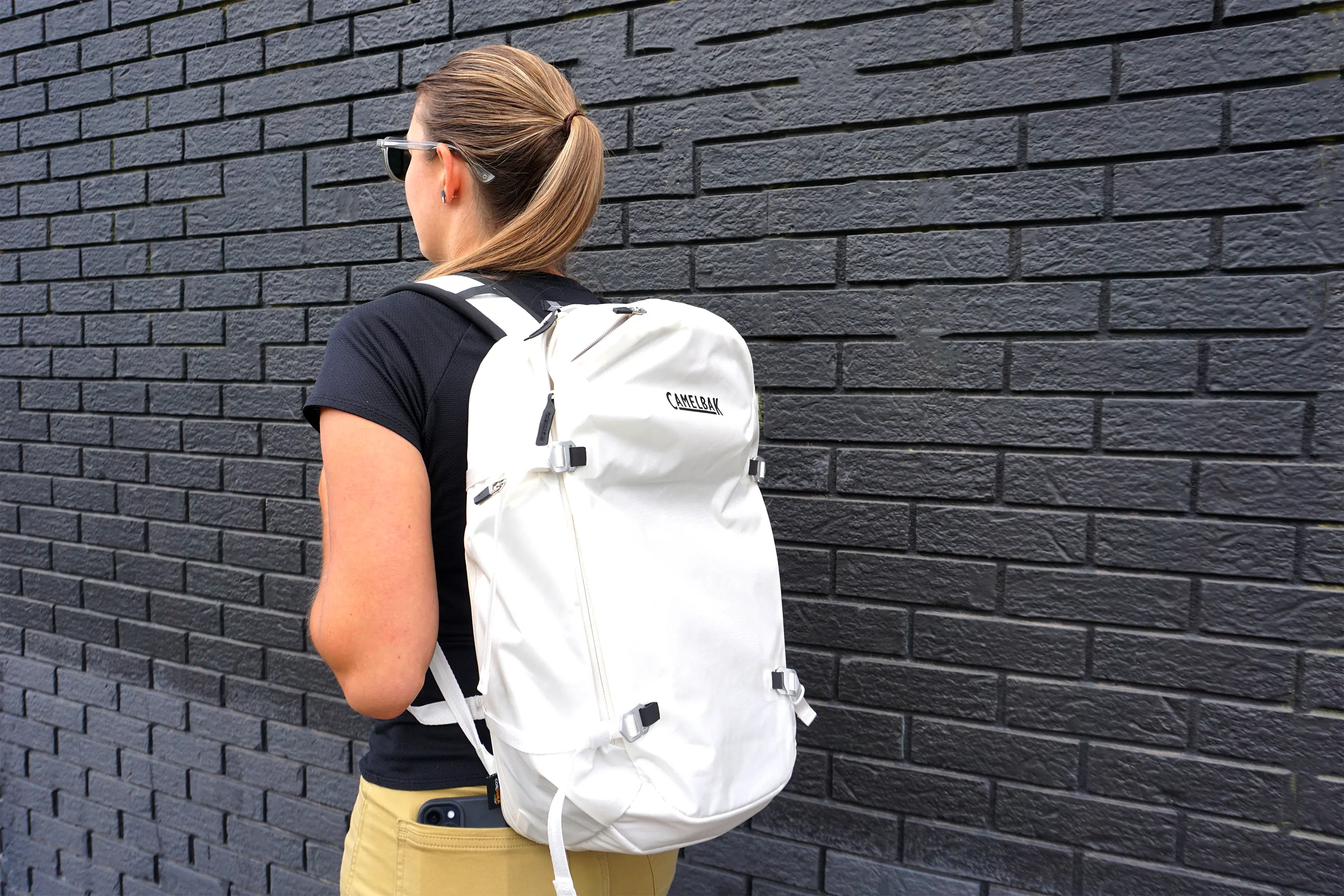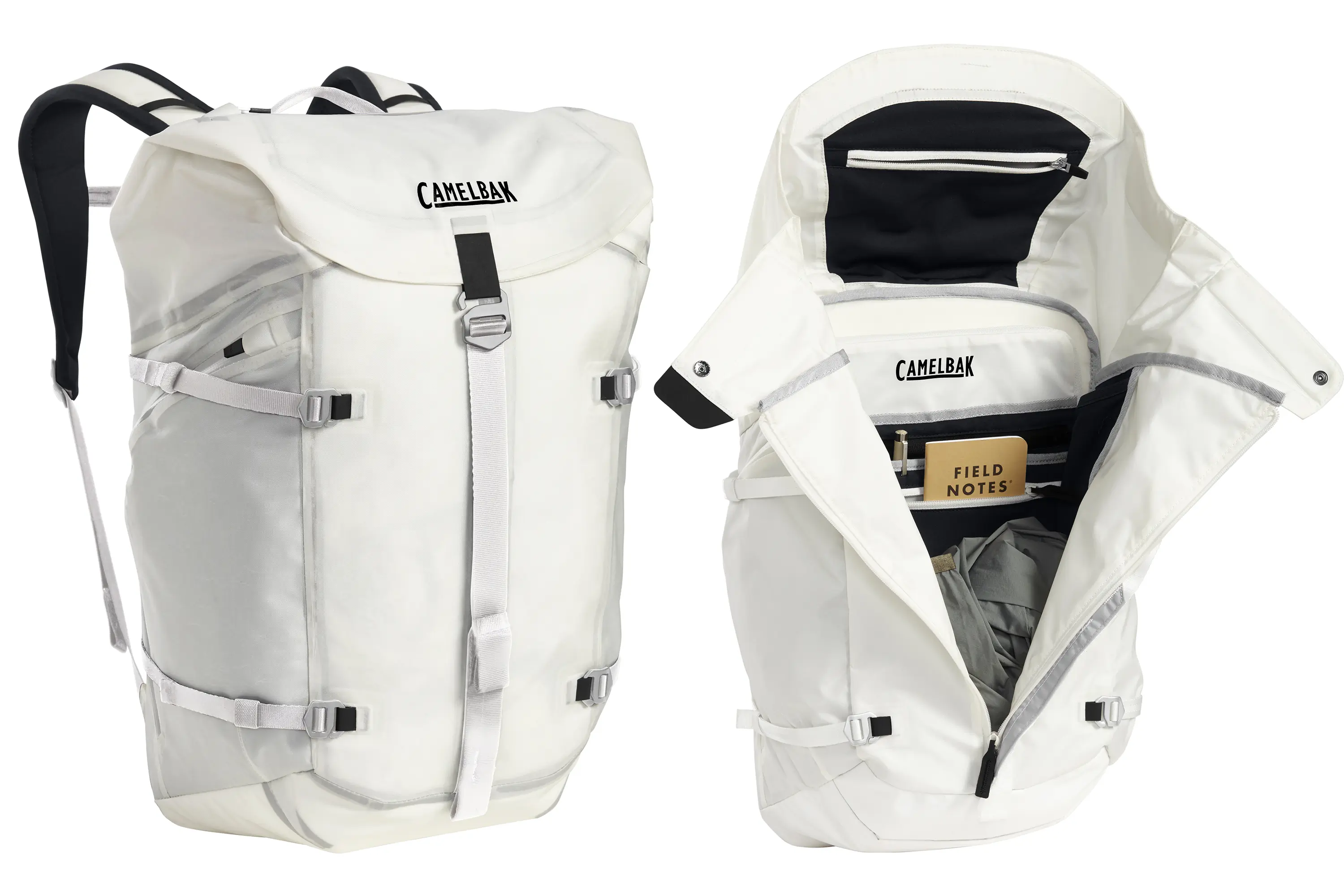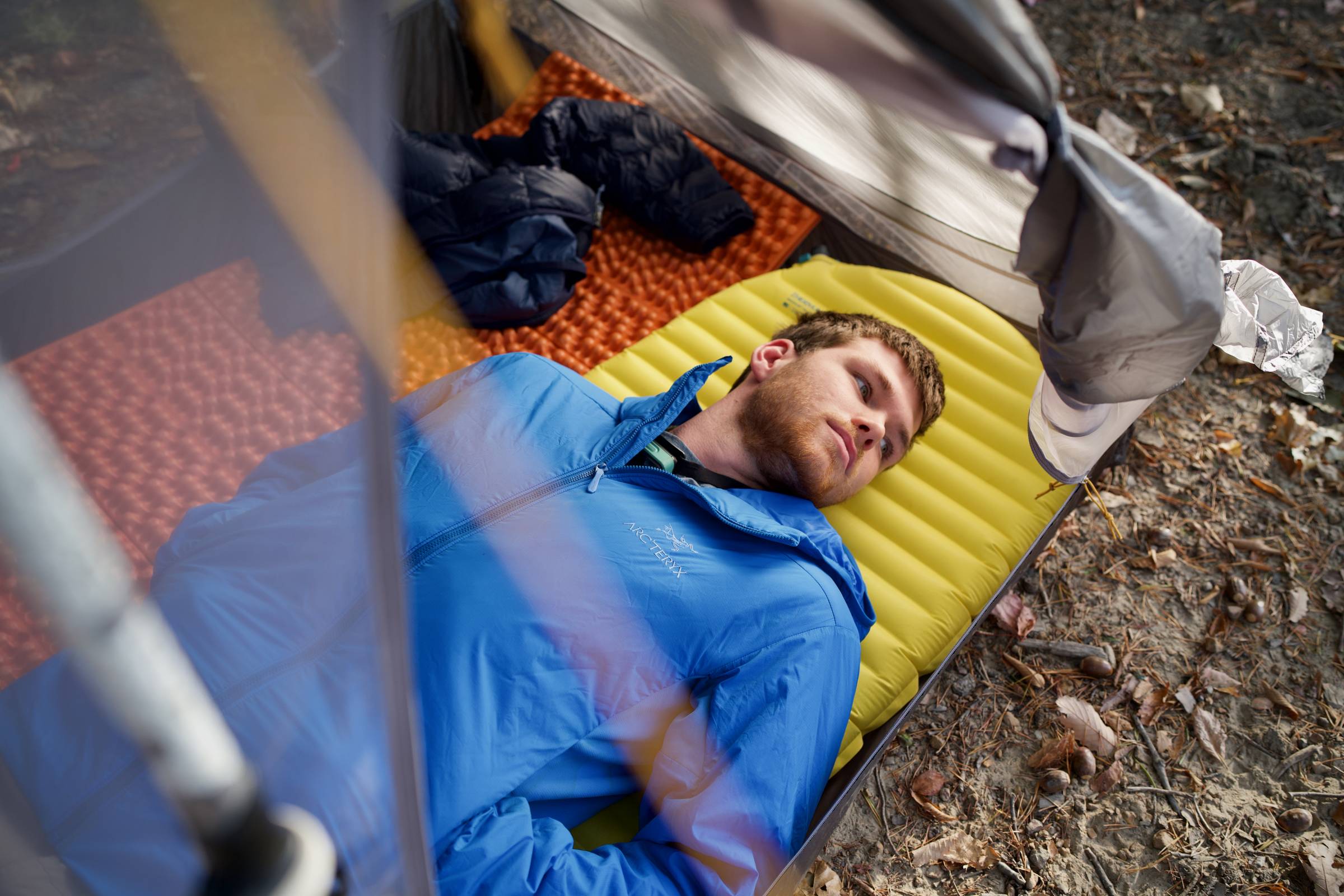Sustainability is oversold — every brand is getting on board these days, trying to innovate the most sustainable fill-in-the-blank gear.
When you boil down all the flashy features, new “technology”, brand ethos, and marketing, my judge of true sustainability is whether or not I’ll use a piece of gear. How long will this new pack last me? Will it help streamline my day, my commute, my stuff? Is it durable enough to handle all that use without breaking down?
If a pack can do all that and becomes the only one I need to use, the sustainability impact of that is tenfold. If I don’t have to buy another pack, accessories, or replacement parts in the future, it is “sustainable” in that sense. “Sustainably made” is an interpretation — a spectrum.
When CamelBak calls its Adventure Travel Pack (A.T.P) its “most sustainable bag ever created” it did mean “sustainable” in the literal sense. The A.T.P. pack body is 100% recycled CORDURA. Every single component is either recycled or a recycled percentage. And all the hardware is recyclable. The pack is also undyed.
And CamelBak didn’t stop there — it uses 100% recycled paper for hangtags, as well as 100% recycled PE polybags for shipping (which has become fairly commonplace in the outdoor industry).
Overall? The CamelBak A.T.P. backpack accomplishes sustainability in both the literal sense, and also in my interpretation of what sustainability means. I’ve said it before: Use it often, keep gear in play, beat it up, buy used gear, repair it, keep it going. That is another way to practice sustainability for all of us who “collect” gear.
In short: Can one pack do everything and solve all my problems? Of course not. (A girl can dream, though.) Did CamelBak’s new foray into sustainable daypacks leave a damn good impression? Yes.
CamelBak is known for its water bottles and hydration; hearing that it was making a non-hydration travel backpack came out of left field. “Does the world really need another sustainable travel pack?” I thought. Well, maybe. Because this is a great one (with one Achilles heel).
Here’s why you should put the CamelBak A.T.P. on your shortlist for travel, commuting, and daily adventures.
- Materials: Recycled 210-denier CORDURA Re/COR N66 (pack body and base); 210d CORDURA Re/COR N6 (lining); 100% recycled polyester (pocket lining); polyester 4-way stretch twill (suspension); 50% recycled EVA foam (padding); aluminum (hardware).
- Number of pockets: 1 main compartment, 3 external pockets, 5 internal pockets (plus divider)
- Sternum strap: Yes (no hip belt)
- Hydration compartment: Yes
- Laptop compartment: Yes
- Verified weight (for A.T.P. 20): 1 lb., 15 oz. (~2 lbs.)
- Price: $160-180
Pros
- Great organization, zippers, and pockets
- Comfortable to carry during extended travel
- Water-resistant exterior
- Protected/zippered pockets
- Made with sustainable materials
- Versatile depending on where you are going
- Not heavy
Cons
- Not a big enough main compartment on the 20L
- No lash loops on front panel
- Pricey
- Dirties easily — undyed pack will require spot cleaning
CamelBak A.T.P. 20 Pack Review
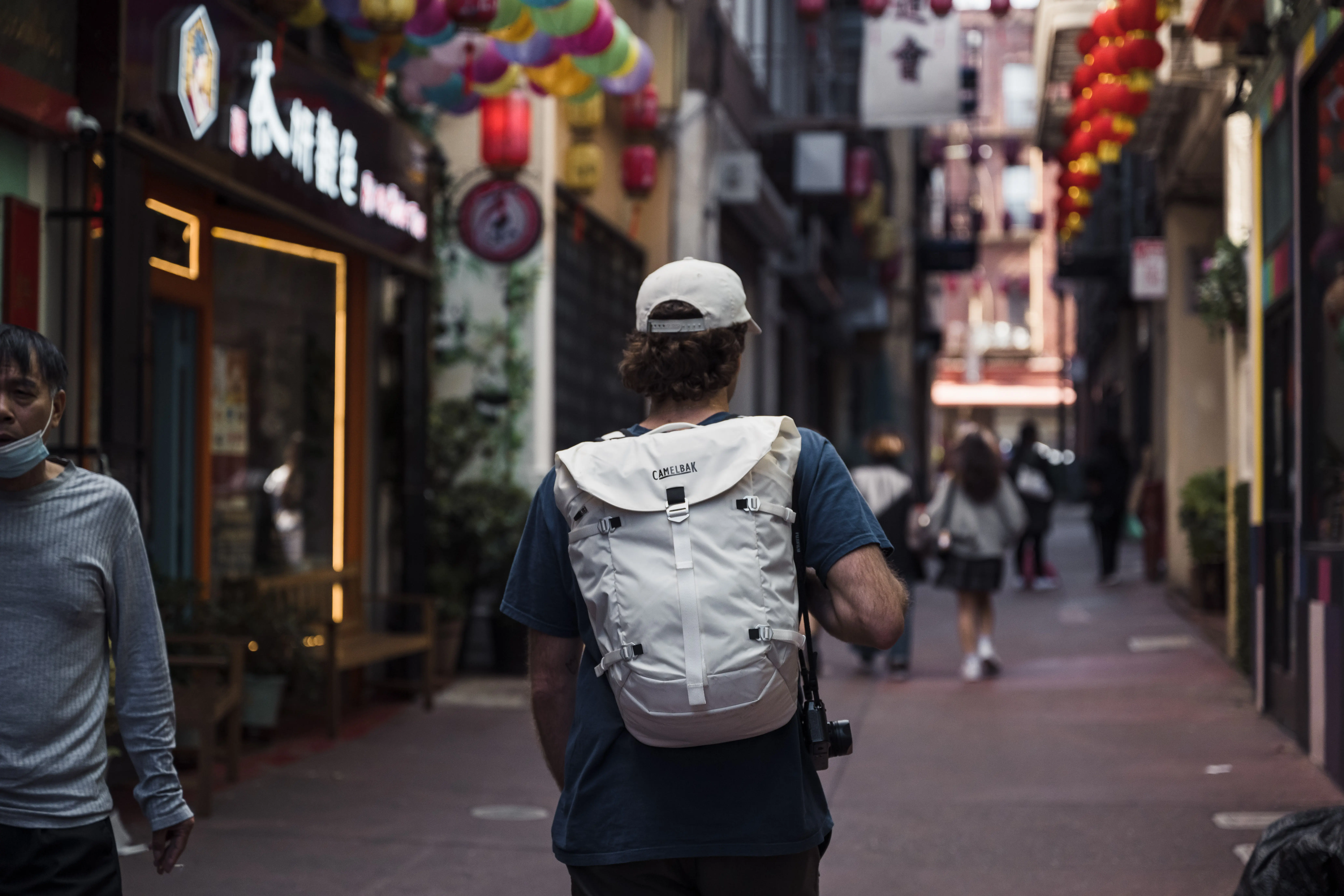
I’ve taken my CamelBak A.T.P. pack on buses, trains, subways, cars, hiking, camping, and, most often, to the office.
Bottom line: After weeks of testing, I trust this backpack. It’s got a ton going for it. The toughest criticism I have is that the 20L size will likely not be enough room for some commuters or travelers. On the flip side, the 26L size has a different design I haven’t tested yet.
Designed for Daily Use: The A.T.P 20 Pack
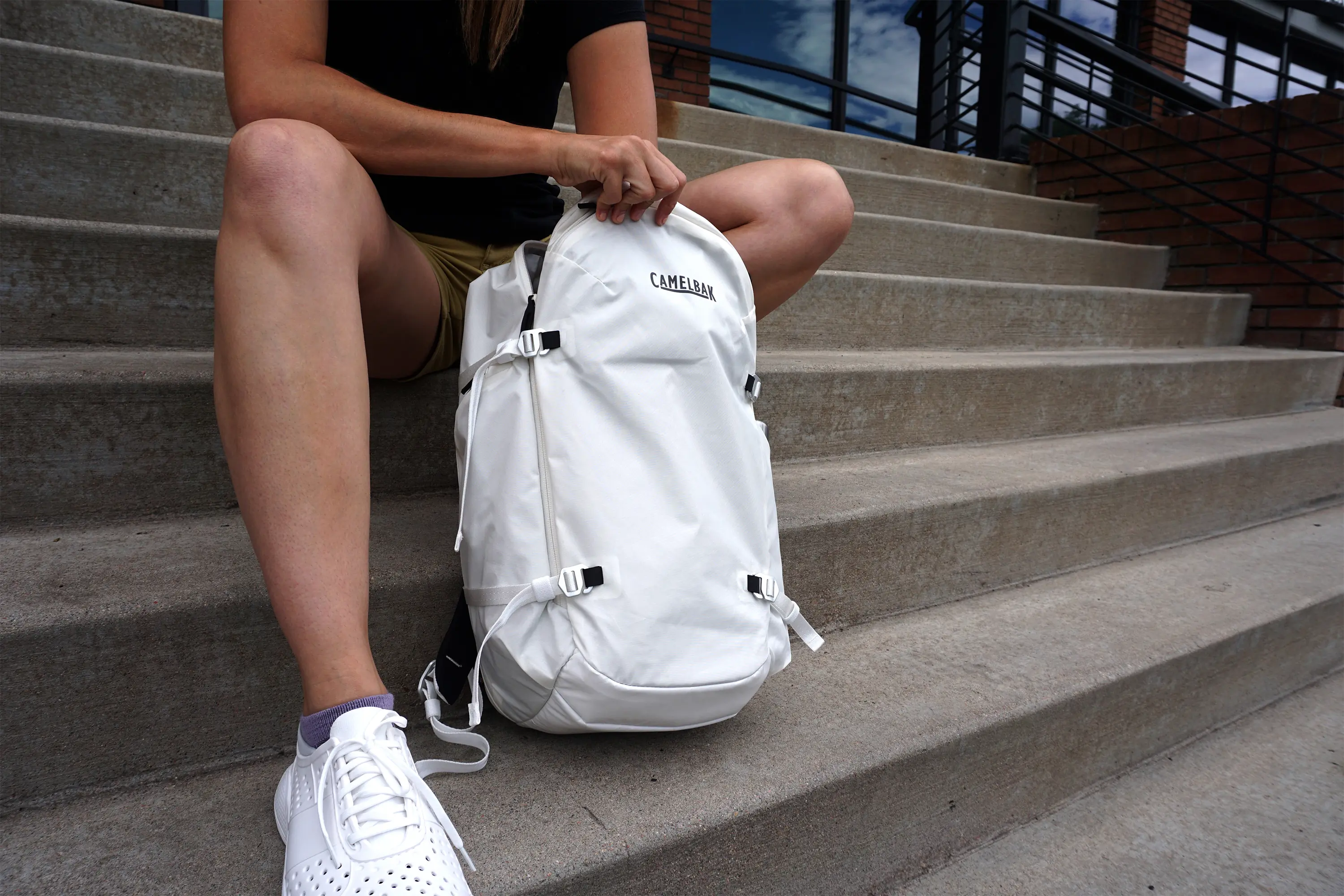



First and foremost, let’s get into the design. The CamelBak A.T.P. 20 has an accessible, easy-to-use design with good zippers and pockets. It has tons of storage for a laptop to pens, hydration, and those miscellaneous, always-in-your-pocket items. And, everything stays secure.
The A.T.P. pack functions well, it’s comfortable, and there’s no annoying design quirks or overlooked functions. The shoulder straps are also narrower than most daypacks, making them super comfortable (reducing any chances of sweating or chafing).
Flexes for Travel
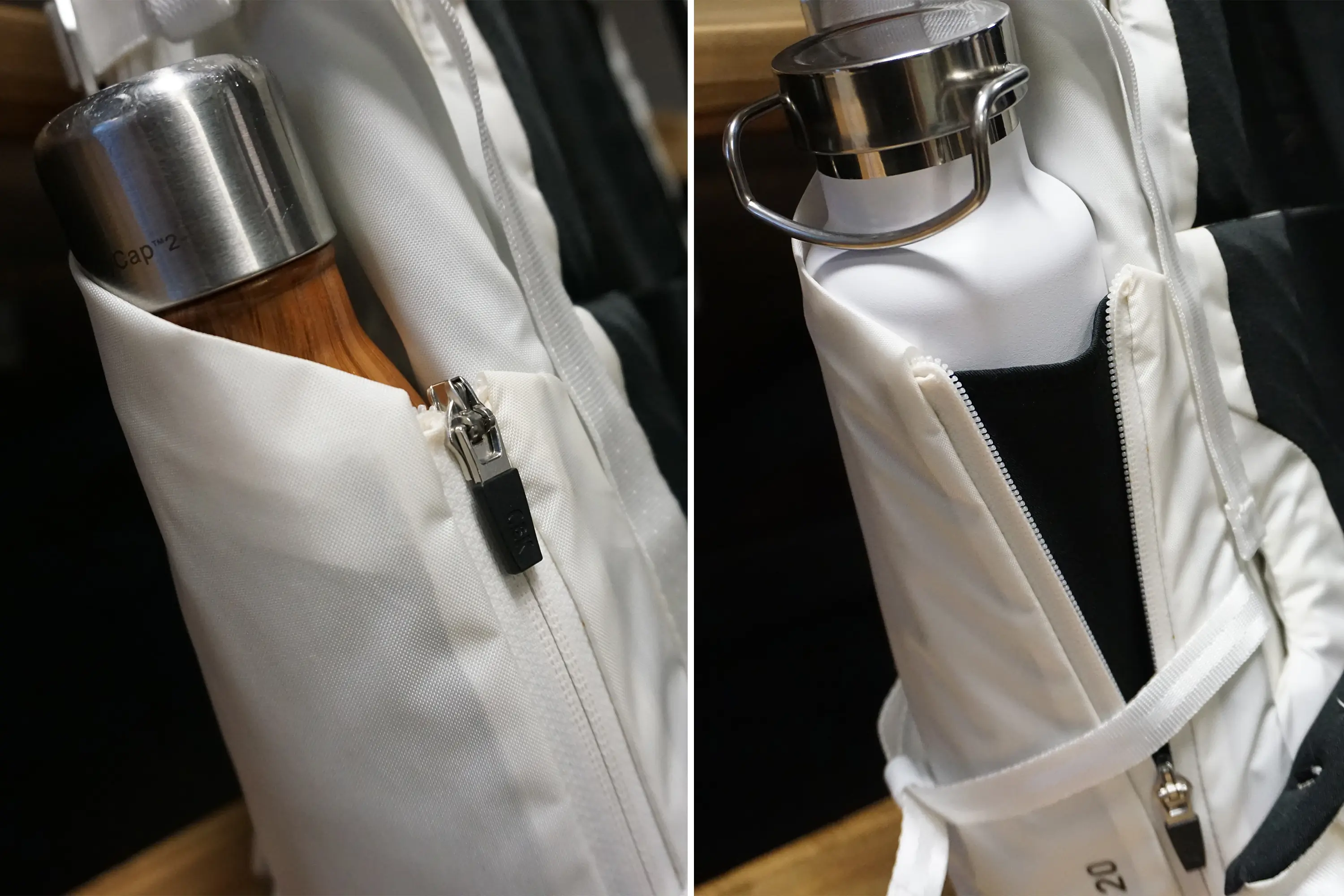



The water bottle pocket design is stellar. The pocket is deep enough for taller bottles, and zippers open to expand for items of any width. I tried it with my Nalgene, a Hydro Flask, a CamelBak-brand bottle, and the narrowest water bottle I could find in my kitchen. It holds them all.
Is a water bottle pocket the most important thing here? No. But anyone who knows me — and anyone who knows what a good pack feels like — knows it has to have side pockets. Most brands employ the double stretch mesh, but that is easily damaged with poked holes, rips, and the eventual wearing out of elastane.
Then there are brands that include two side pockets. They often use the small zippered kind, though. The ones that are neither big nor deep enough for a bottle. I have never understood this. A water bottle or external drop pocket is a pretty basic thing any pack should be able to easily accommodate. CamelBak’s A.T.P. does include one on the left, and there’s a zippered organizer and key loop stash pocket on the right.
There are two more really thoughtful design examples: a luggage pass-through on the back compartment and an internal/external zippered front pocket that can separate damp or dirty gear, or, say, a layer from your electronics. I recently discovered the versatility of this pocket and have been loving it.
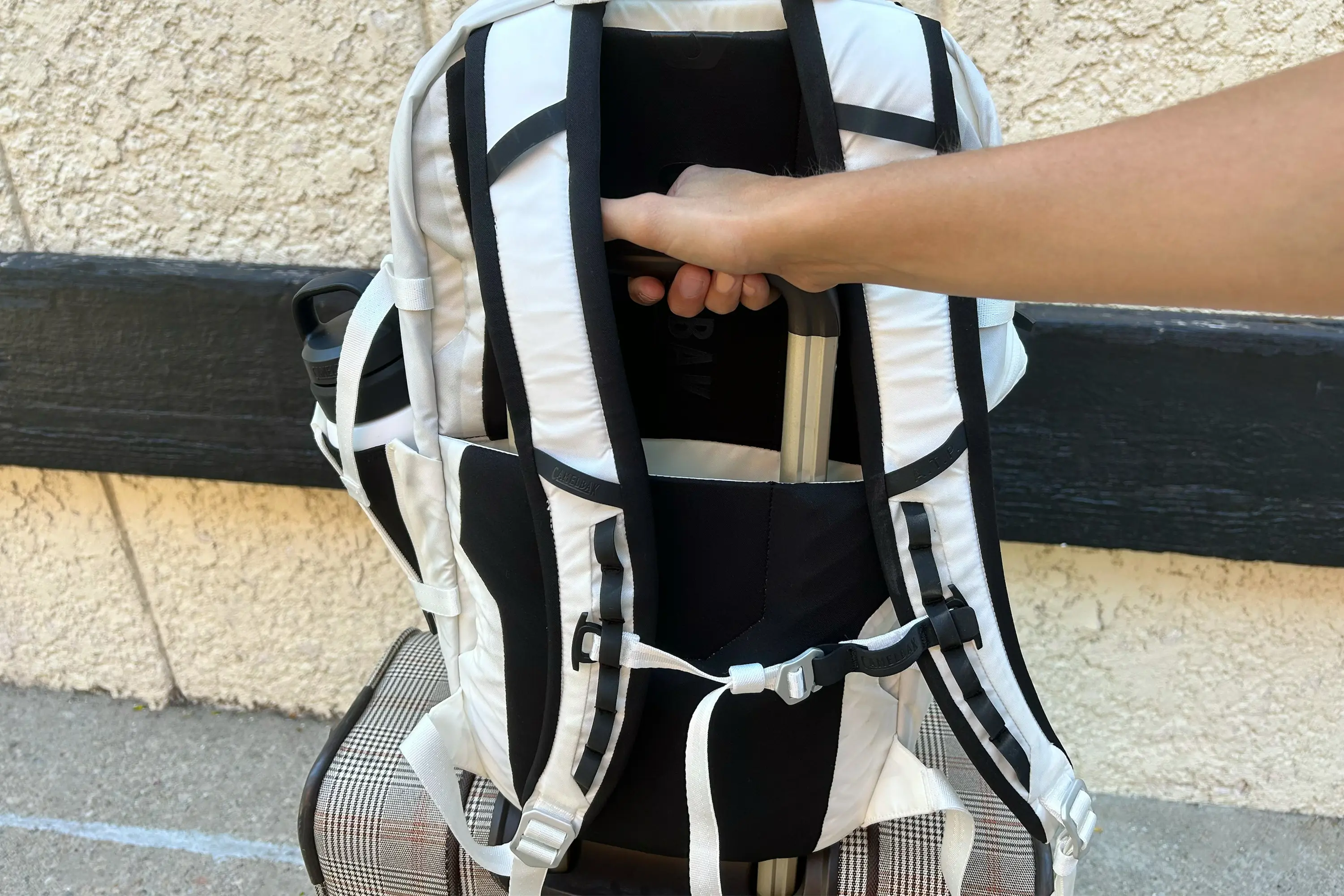



Cons? Minimalist, Small Main Compartment
Intentional or not, CamelBak made the A.T.P. backpack pack pretty minimalist. Specifically, I’m speaking about the 20L size. If you’re used to a big, roll-top-style, black hole of a bag — one that can carry bigger, bulky items like groceries, Amazon boxes, and bike helmets — know that this pack isn’t that.




By the time you have either a laptop in the sleeve (which I did nearly every time I carried this pack) or a hydration bladder in the back compartment, and stuff in the side water bottle and zippered pockets, there’s limited internal room. The adjustable and expandable compression straps do help. The pockets and ease of access on this pack are stellar. But the actual internal room is a compact, slightly small feeling 20 L.
That said, on the daily, I carried everything I needed in the CamelBak A.T.P. backpack. I fit multiple books, a camera, and a computer; a rain jacket, phone, water bottle, and wallet; some layers for hiking, a small travel towel, a mug, and all my dog’s gear in this bag.
There’s some restraint in the design here. It’s sleek, lightweight, and not overstuffed or clunky. That’s both a pro and a con for someone like me who’s constantly schlepping and traveling around. I need organization; I need restraint. I also need to carry (sometimes) a lot of stuff, and it’d be nice for it to all fit in this pack.
The 26L size does look more promising when it comes to extra room for bigger stuff; and on spec, this one can easily stash or carry a helmet. If that’s a requirement for you for a daily-driver pack, opt for the 26L instead of the 20L.
A Note on Sustainability
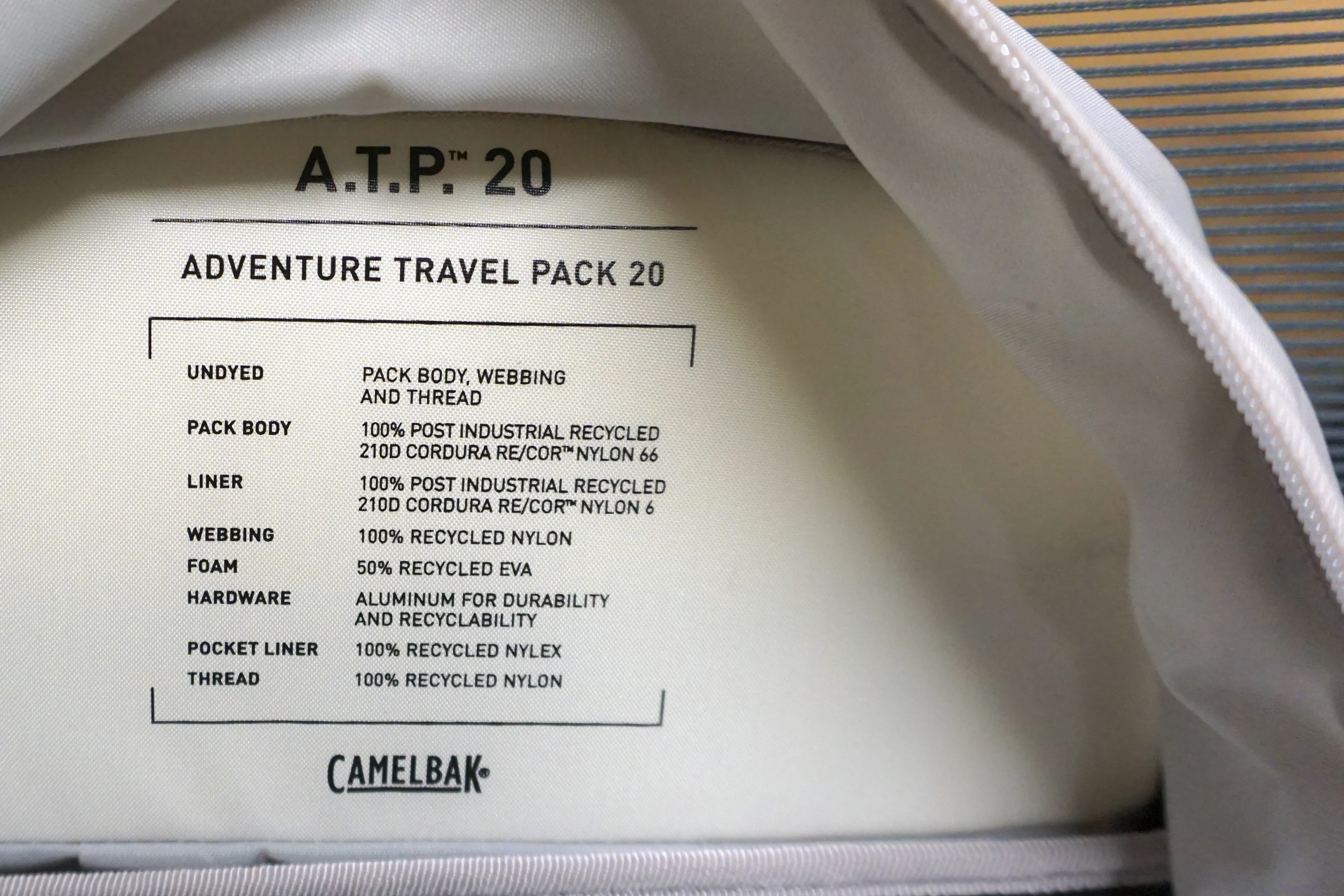



Even if you weren’t shopping specifically for the CamelBak A.T.P. backpack, or looking to invest in really sustainably made gear (though you should), it’s hard to ignore the sustainable upgrades. All the recycled components are printed directly onto the pack. I believe CamelBak did this (1) for transparency and (2) to reduce plastic cards, pamphlets, and excess printed tags that end up in the rubbish pile.
I liked seeing this little printed reminder every time I opened the pack — a reminder that recycled materials, depending on how they are constructed and their application, can be every bit as durable as their virgin synthetic counterparts.
One material that stands out on this list, and in my testing, is CORDURA. Time and time again, CORDURA has proven itself. Many in the industry would agree it’s one of the best fabrics when it comes to durability. CORDURA is used in everything from tents to boots, jackets, and packs. It’s in the kick guards on ski pants, the ultra-durable bike messenger bags and duffels, the ripstop face fabric on shells, and the impenetrable uppers on hiking boots.
CamelBak takes a slight turn, using CORDURA Re/COR — an offshoot and newer textile from the brand that employs high-tenacity, abrasion-resistant, high-denier thread made with recycled yarn instead.
So far, I haven’t noticed any knocks or failures from the pack’s fabric. Other than the obvious — the undyed white pack saves tons of energy in production, but it picks up and shows dirt fairly easily. CamelBak says its undyed version’s production “emits nearly half the greenhouse gas emissions” and requires less power and water, as does most undyed gear.
Conclusion: The A.T.P 20 Pack




CamelBak already makes hydration packs: slim, with a hydration compartment, sternum strap, and one pocket. These types of packs aren’t the most technical or durable. They’re meant for light hiking and shorter adventures.
But the CamelBak A.T.P. backpack isn’t that. It truly does feel like something different from the brand, which is cool to see. Even cooler is the fact that the pack performed well. No points of failure, great organization and design, and it’s comfortable.
My verdict: The A.T.P. Pack challenges some of the REI Co-op, Patagonia, Matador, and Gregory daypacks on the market.
CamelBak surprised me with the CamelBak A.T.P. backpack. I look forward to continuing testing indoors, outdoors, traveling, and everywhere in between. I highly recommend this pack to anyone who wants a pack that’s lightweight, highly organized, versatile, and capable of daily or long-term travel.
